What the fuss is all about: wild swimming in France

On a low-impact holiday this summer, Kate Williams takes the plunge wild swimming in France to discover why so many prefer it to an indoor swimming pool.
Violins creaked ominously in my head as I dipped a trepidatious toe into the water (duunnn dun… duuun dun…). It was ridiculous, really; the river was crystal clear and barely two meters deep at the widest part. The potential for large predators was surely negligible. But I was raised in the golden age of disaster movies and scaremongering public information films and untamed water had always seemed a little bit terrifying.
Friends had gone mad for it back home, posting pictures of themselves in unflattering neoprene gimp suits, battling through Britain’s murky rivers and leaden seas. They extolled the benefits of pitting oneself against nature’s raw power (or becoming one with it; it was never clear whose side Nature was on). I didn’t get it really. It looked cold. It looked dirty. It evoked memories of childhood ‘summers’ in Scarborough. Leaning at 45 degrees into the wind, crunching all-too-literal sandwiches. Emerging from the North Sea to have the mottled crimson chicken skin flayed from our bones by silica-impregnated towels. No, wild swimming was never going to be for me.
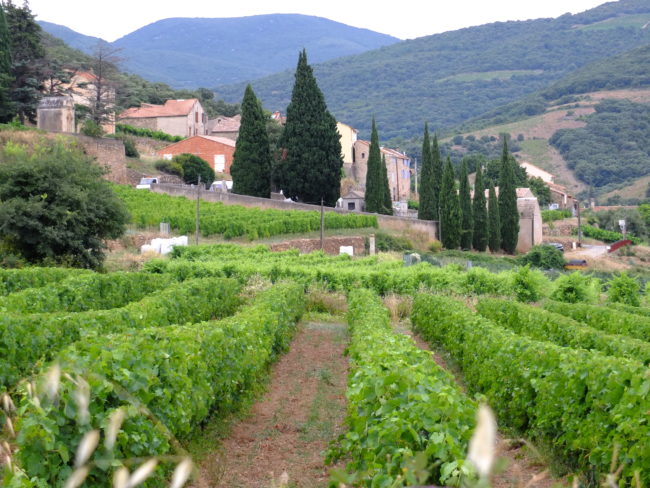
But here we were in Ceps, Haut-Languedoc, France, in late July. I’d left it too late to book anywhere else and the little stone cottage was all we could afford. The village was an oval jumble of stone houses with a cobbled alleyway for a main street. It was so narrow you could touch both sides at the same time and walk it end to end in under a minute. It was an hour’s drive to the coast and the town of Beziers. There was literally nothing to do. And it was sweltering.
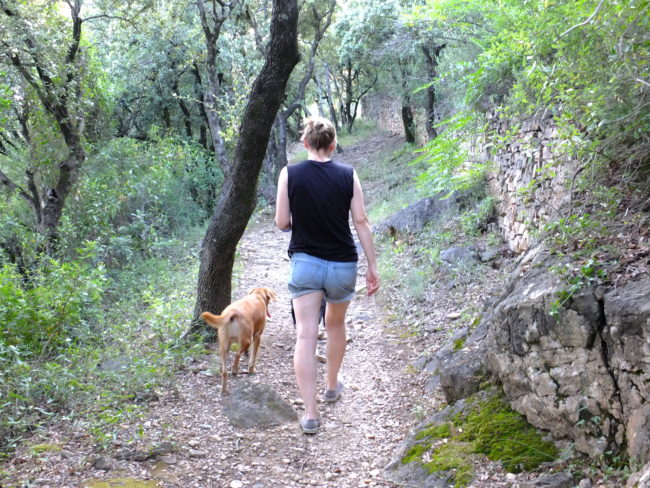
Venturing a little further along, we found a shady spot where the river widened to a green pool. I waded cautiously in, scrambling to stay vertical on the slippery stones. The cold was blade-sharp and every reed brushing my ankles was a malicious tentacle trying to drag me under. Giving myself a stern talking to, I immersed, gasping, and swam out into the middle. Hidden eddies from the current slowing off the rapids picked me up, spun me round a couple of times and ushered me downriver. I’m a strong swimmer (the only sport I was ever any good at) and swam out of the current and back up. Far from being scary, it was exhilarating and I went back in to do it again.
Imaginary sub-aquatic monsters and the cold forgotten, I swam out across a deep green pool to the other side and clambered onto some rocks. Tiny fish darted in and out of the shallows and tested the edibleness of my toes. Mating dragonflies tangoed on reed bed dance floors as swifts dive bombed the river’s surface. Sunbathing frogs flicked into a lonely puddle at my shadow. Other childhood memories began to surface: crabs in rock pools; squatting all day long over miniature briny worlds; never wanting to go home.
Back on the opposite bank my partner was still only ankle-deep and wincing. I offered gentle words of encouragement and, when that didn’t work, abused his manhood (that did).
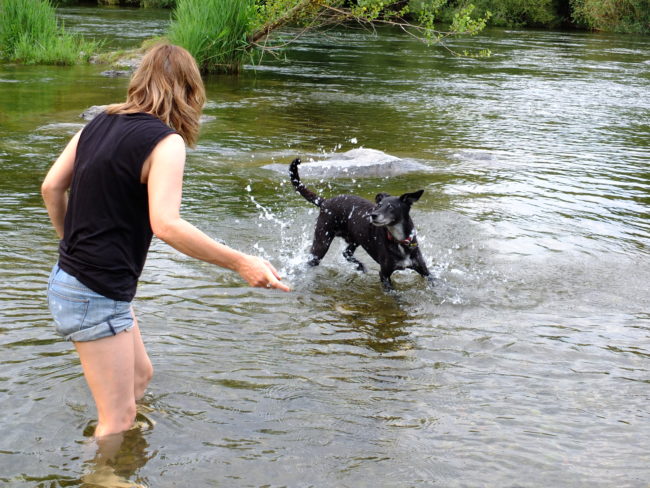
Abandoned on the bank, the dogs went mental. One of them launched himself into the river in a desperate rescue attempt. Reaching me, he affectionately raked my face, sneezed into it and swam away. He seemed to be having a similar Damascene moment, swimming endless figures of eight like a large black otter, snorting with pleasure. Dog 2 was less convinced and attempted to vanquish the watery foe by biting it, careering up and down the bank and generally breaching the peace.

We spent the rest of the day by the river, and the rest of the week discovering ever-better swimming spots. When we weren’t skimming stones and throwing sticks, we lounged like Romans on the sofas in the cool dark cottage (we kept the windows closed in the day and opened them only for the cool night air, like proper southern Europeans). Time slowed like a stone sinking through treacle. We dozed, listened to Radio FIP (feeling ever so continental) read books, peeled grapes and compared the local wines (tasting notes: all excellent).
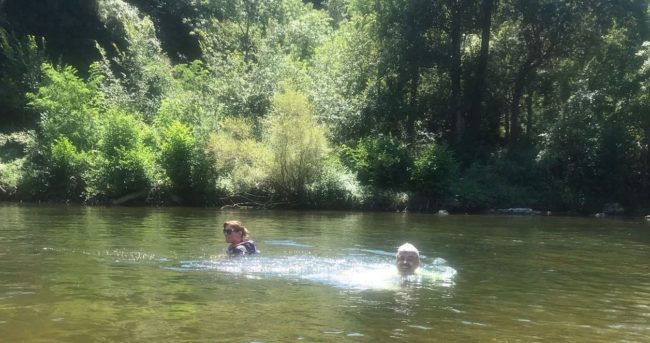
As well as the river’s delights, we took advantage of a cloudy day to do one of the numerous hiking trails in the area: a short circular trek along the river gorge and around the hill that backed Ceps. Another day we walked the nearby Gorges d’Heric, a 6 km stretch of natural swimming pools and waterfalls enjoyed by every French family for miles around. We even braved the white water, kayaking the 15 km run through the gorges from Tarassac to Roquebrun.
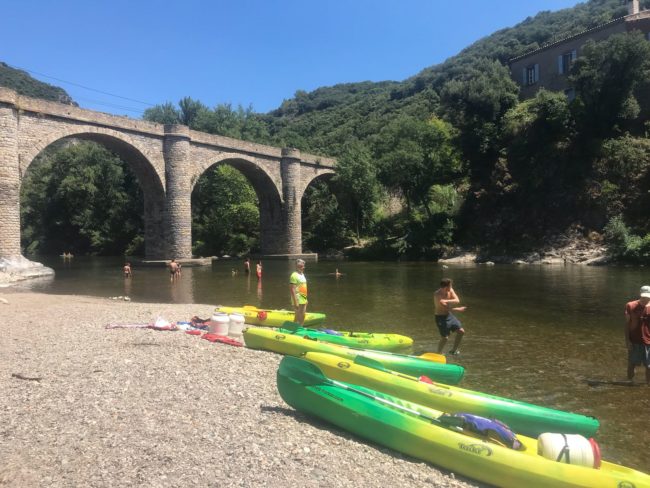
We made it to Beziers with its ungentrified old quarter and flea market (full of the same rickety old skip-salvaged tat common to flea markets around the world). We scaled the claustrophobia-inducing tubes of the cathedral’s towers and gazed out over the Hérault countryside. We took a boat trip along the milky Canal Du Midi (which we plan to come back and cycle next year).
But mostly we ate, drank and swam. Somehow, a sterile pool is never going to quite cut it again…
How to get there
From the UK, take the Eurostar to Paris Gare du Nord and then metro across the city to the Gare du Lyon. High speed TGV trains between Paris and Barcelona run frequently throughout the day and take 3.5 hours to Montpellier, to the north of Beziers. Local trains from Montpellier to Bezier take half an hour. The TGV also stops at Narbonne to the south.
We had our own car, but if you want to be really green Hérault Transport runs a bus from Beziers to Roquebrun, the next village from Ceps. You can walk between the two villages but be careful as the road has no verges. Alternatively, book ahead for one of the taxi services based in the neighbouring towns.
For the superfit, Ceps/Roquebrun are a 2.5 hour cycle ride from Beziers.
As mentioned, Ceps has no shops so you’ll need to stock up before arriving unless you plan on living on wine alone (we gave it a fair go). Roquebrun has a few restaurants, bars and a café, a pizzeria, the obligatory winery, a bakery, newsagent and a rather basic grocery shop. Other than that, a dearth of independent local shops sadly means you’re at the mercy of the hypermarches in nearby Cessenon-Sur-Orb and Cazoules-Les-Beziers. If you’d rather not give your money to the man, you’ll need to be able to get to the markets in the surrounding area.
 About the author
About the author
Kate Williams is a freelance writer and translator living in Spain. She moved to Barcelona to teach English in 2003 and never looked (or came) back. When she isn’t writing, or earning a proper living at her day job, she enjoys hiking in the Catalan countryside and volunteers at a local animal sanctuary. She’s also busy interviewing people, researching and writing topic introductions for us. She blogs at the Writer Stuff.
The views expressed in our blog are those of the author and not necessarily lowimpact.org's




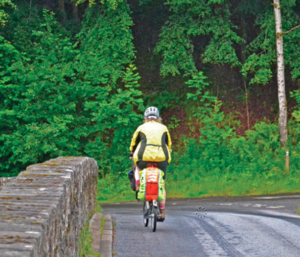 Holidays without flying: how to cycle around Scotland on a folding bike
Holidays without flying: how to cycle around Scotland on a folding bike
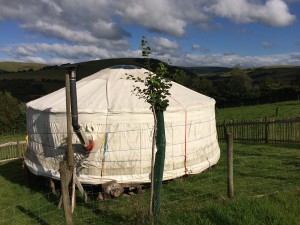 10 reasons our yurt holiday on a farm in Wales was the best ever
10 reasons our yurt holiday on a farm in Wales was the best ever
 Models of repopulation: bringing low-impact living to life in rural Europe
Models of repopulation: bringing low-impact living to life in rural Europe
 Beginner’s Guide to Wild Swimming
Beginner’s Guide to Wild Swimming
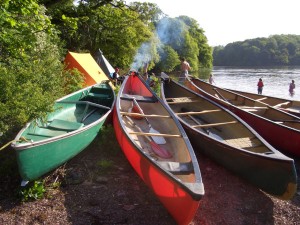 Canoes & kayaks
Canoes & kayaks
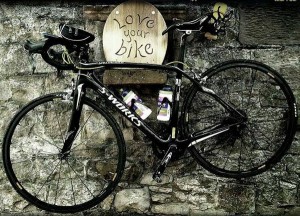 Cycling
Cycling
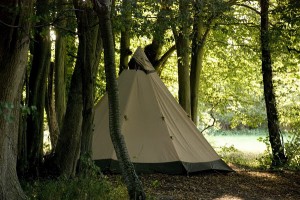 Low-impact tourism
Low-impact tourism
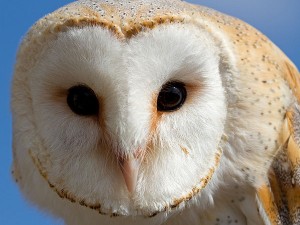 Nature awareness
Nature awareness
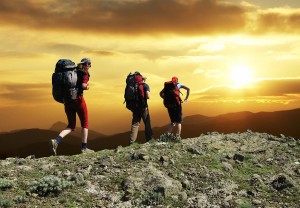 Walking & hiking
Walking & hiking
 Wild swimming
Wild swimming


